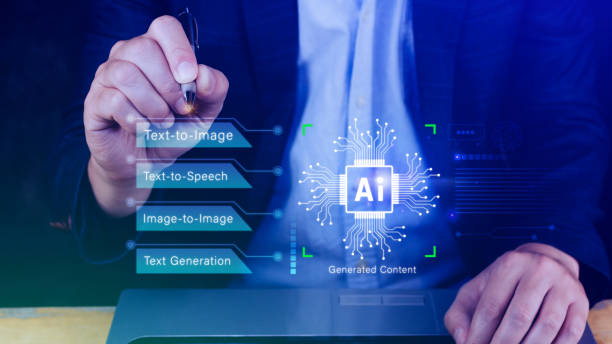Chapter One: What is Artificial Intelligence? An Explanatory Look

Artificial Intelligence (Artificial Intelligence or AI) refers to a branch of computer science that deals with designing and building machines capable of imitating, simulating, and sometimes surpassing human mental abilities.
This field includes the development of systems that can reason, learn, understand, and make decisions.
The main goal of Artificial Intelligence is to create machines that can perform tasks typically requiring human intelligence, such as understanding natural language, recognizing patterns, solving problems, and even creativity.
This area is not limited to complex tasks but can also be applied to daily tasks.
Educational concepts are inherent in the heart of Artificial Intelligence, as systems must learn from data and develop their knowledge.
From simple algorithms to complex neural networks, Artificial Intelligence has opened up a world of possibilities for us.
In an explanatory view, Artificial Intelligence includes numerous sub-branches such as machine learning, deep learning, natural language processing, computer vision, and robotics.
Each of these sub-branches addresses specific aspects of intelligence and has unique applications.
For example, machine learning allows systems to improve using data without explicit programming.
In fact, Artificial Intelligence is transforming how we interact with technology and the world around us.
This technology not only helps simplify processes but also provides innovative solutions for complex challenges.
Understanding the foundation of Artificial Intelligence is crucial for anyone who wants to find their place in today’s and tomorrow’s world, and this article will serve as a comprehensive explanatory resource.
Are you losing business opportunities because of an outdated website? With Rasawwb, solve the problem of not attracting potential customers through your website once and for all!
✅ Attract more high-quality leads
✅ Increase brand credibility in the eyes of customers
⚡ Get free consultation for corporate website design
Chapter Two: The Evolution of Artificial Intelligence from Theory to Reality

The history of Artificial Intelligence is full of ups and downs and pioneering ideas.
Since the Dartmouth Conference in 1956, where the term “Artificial Intelligence” was first coined, this field has come a long way.
In the first decades, the focus was on symbolic logic and expert systems, which attempted to represent human knowledge in the form of rules and logic.
This era saw significant advancements in problem-solving and theorem proving, but faced limitations in scalability and flexibility.
In recent decades, with the dramatic advancement in computational power and access to vast amounts of data, the paradigm of machine learning, and especially deep learning, has become the main driving force behind Artificial Intelligence.
This transformation has led to unprecedented results in areas such as image recognition, natural language processing, and computer games.
Artificial Intelligence in the current era is not merely a theoretical concept but has become a tangible reality that affects our lives at every moment.
The news aspect of these advancements is constantly being published, from self-driving cars to intelligent voice assistants.
This specialized trend is also very evident in various sub-branches of artificial intelligence, where each branch develops deeply and with its specific details.
Historical developments in Artificial Intelligence show how a scientific idea can gradually transform into a technological revolution that shapes the future of humanity.
This evolutionary path gives us a better understanding of the challenges and opportunities ahead and reinforces the questionable content nature surrounding the future of AI.
Chapter Three: Main Branches of Artificial Intelligence and Their Applications
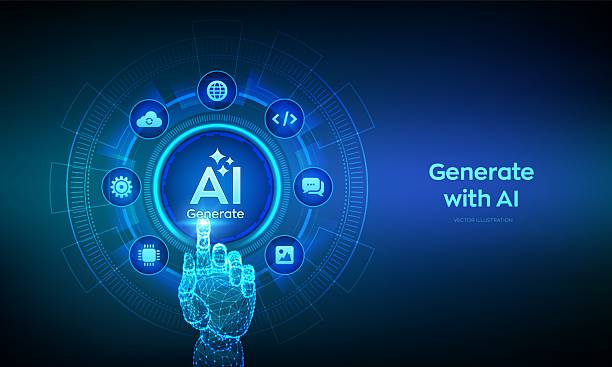
Artificial Intelligence is a large umbrella covering many sub-branches, each focusing on a specific aspect of intelligence and its unique applications.
One of the most important of these branches is Machine Learning, which enables systems to learn from data and identify patterns without being explicitly programmed.
Its subset, Deep Learning, has achieved unprecedented results in image recognition and language processing by using artificial neural networks inspired by the human brain.
Another branch, Natural Language Processing (NLP), allows machines to understand and generate human language.
NLP applications include machine translation, voice assistants (like Siri and Google Assistant), and sentiment analysis.
Computer Vision is another branch that gives computers the ability to “see” and interpret images and videos; its applications range from facial recognition and autonomous driving to disease diagnosis in medicine.
Robotics also has a close connection with Artificial Intelligence and deals with the design, construction, and operation of robots that can perform physical tasks automatically.
Expert systems, fuzzy logic, and neural networks are other important sub-branches.
This specialized classification shows how Artificial Intelligence has infiltrated various fields and has numerous educational and practical applications.
Below is an explanatory table of some of the main branches of Artificial Intelligence and their key applications:
| Main Branch of Artificial Intelligence | Brief Explanation | Key Applications |
|---|---|---|
| Machine Learning | Systems that learn from data and identify patterns. | Recommender systems, predictions, fraud detection |
| Deep Learning | A subset of machine learning using complex neural networks. | Image recognition, advanced natural language processing, self-driving cars |
| Natural Language Processing (NLP) | The ability of machines to understand, interpret, and generate human language. | Voice assistants, machine translation, sentiment analysis |
| Computer Vision | The ability of machines to interpret and process images and videos. | Facial recognition, medicine (disease diagnosis), robotics |
| Robotics | Design and construction of robots to perform physical tasks. | Industrial robots, service robots, drones |
Chapter Four: Artificial Intelligence in Daily Life: Applications and Guidance
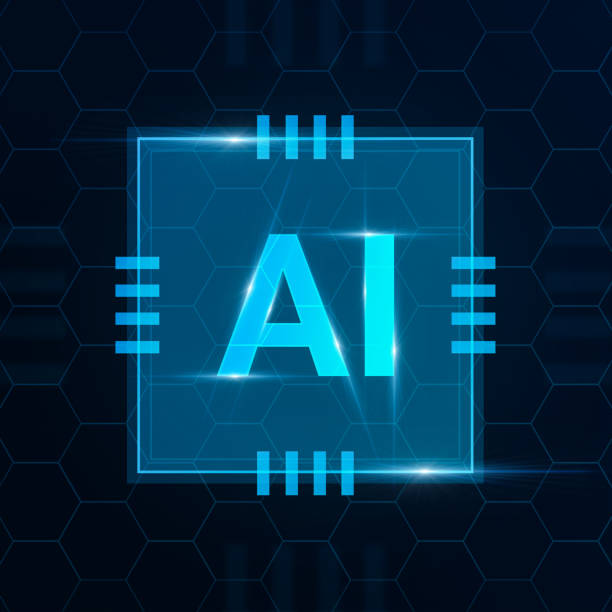
Artificial Intelligence is no longer a science-fiction concept; rather, it has subtly infiltrated many aspects of our daily lives.
From the moment we wake up until we go to bed, AI-based technologies help us.
Voice assistants like Siri, Alexa, and Google Assistant are clear examples of Artificial Intelligence that allow you to control devices with your voice, search for information, or set reminders.
Recommendation systems on platforms like Netflix, YouTube, and Amazon also use Artificial Intelligence to analyze your preferences and suggest relevant content, providing an entertaining and personalized experience.
In the financial sector, Artificial Intelligence helps banks and credit card companies identify suspicious activities and fraud, ensuring the security of your transactions.
Navigation apps like Google Maps use Artificial Intelligence algorithms to suggest the best routes and predict traffic.
Even spam filters in your email and facial recognition on your smartphone also work with Artificial Intelligence.
For better utilization of these technologies, some guidance can be offered:
- Privacy Settings: Always check the privacy settings of AI applications to ensure how your data is used.
- Using Smart Assistants: To increase productivity, use voice assistants to set reminders, play music, or conduct quick searches.
- Suggested Content: Enjoy using recommendation systems to discover new movies, music, or products, but remember these are just suggestions.
- Awareness of Fake News: Given Artificial Intelligence’s ability to generate content, pay attention to your news sources and always seek credible information.
These applications show how Artificial Intelligence helps improve our efficiency and ease of life, hence an explanatory understanding of these phenomena is essential.
Does your current website convert visitors into customers, or does it drive them away? Resolve this issue forever with professional corporate website design by Rasawwb!
✅ Build strong credibility and branding
✅ Attract target customers and increase sales
⚡ Get free consultation now!
Chapter Five: Artificial Intelligence in Industry and Business: Opportunities and Analyses
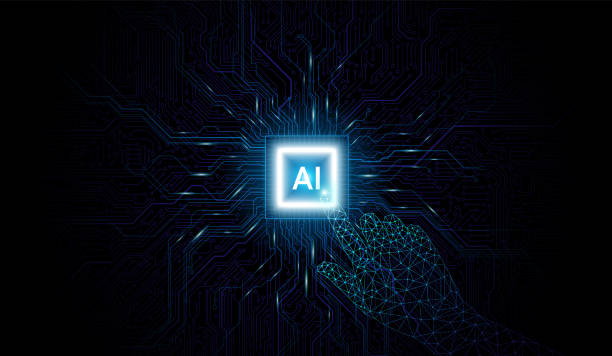
Artificial Intelligence is rapidly becoming a key driving force for the transformation of industries and businesses worldwide.
From manufacturing and logistics to customer services and marketing, Artificial Intelligence offers countless opportunities to increase efficiency, reduce costs, and create new value.
In the manufacturing sector, robots equipped with AI perform repetitive and hazardous tasks with high precision, minimize human errors, and enable the optimization of production processes.
In the supply chain, Artificial Intelligence helps predict demand, optimize routes, and manage inventory, which leads to reduced time and cost.
In customer service, chatbots based on Artificial Intelligence are capable of responding 24/7 to customer inquiries, improving user experience, and reducing the workload of human personnel.
In marketing, Artificial Intelligence helps analyze customer data for personalizing advertisements, predicting consumer behavior, and optimizing marketing campaigns.
These precise analytical approaches enable companies to reach their target market with greater accuracy.
Banks and financial institutions use Artificial Intelligence for fraud detection, credit risk assessment, and personalized financial advice.
In medicine, Artificial Intelligence plays a vital role in disease diagnosis, new drug discovery, and personalizing treatment plans.
These applications not only demonstrate the high specialized potential of Artificial Intelligence but also highlight the educational and continuous learning nature of AI systems.
Given these changes, companies need to invest in training and developing specialized human resources in the field of Artificial Intelligence to make the best use of these opportunities and lead in today’s competitive world.
This is good news for economic progress.
Chapter Six: Challenges and Ethical Considerations of Artificial Intelligence: Questionable Content
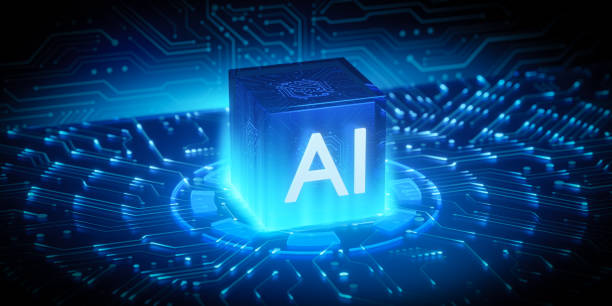
Alongside amazing advancements, Artificial Intelligence also brings significant challenges and ethical considerations that require deep discussions and questionable content.
One of the primary concerns is the issue of data privacy.
AI systems need vast amounts of data to learn, much of which is personal.
The way this data is collected, stored, and used can create privacy issues and lead to misuse.
Bias and discrimination are another serious concern.
Artificial Intelligence algorithms learn from data generated by humans.
If these data contain racial, gender, or social biases, Artificial Intelligence can learn these biases and reflect them in its decisions, leading to unfair and discriminatory outcomes.
This is a complex analytical issue.
Accountability and transparency in Artificial Intelligence systems are also challenging.
When an Artificial Intelligence system makes a wrong decision that leads to harm, whose responsibility is it? The designer, the developer, or the user? Also, many deep learning models act like a black box due to their complexity, making it difficult to understand how they make decisions.
This lack of transparency makes building trust in Artificial Intelligence difficult.
Furthermore, the impact of Artificial Intelligence on employment and the future of work is also a questionable content concern.
By automating tasks, many jobs may be replaced, which makes it essential to retrain and adapt the workforce with new skills.
Therefore, there is an increasing need to develop strong guidelines and ethical frameworks for the development and deployment of Artificial Intelligence to utilize its potentials responsibly and beneficially for society.
These discussions have explanatory and specialized aspects.
Chapter Seven: The Future of Artificial Intelligence and its News Prospects
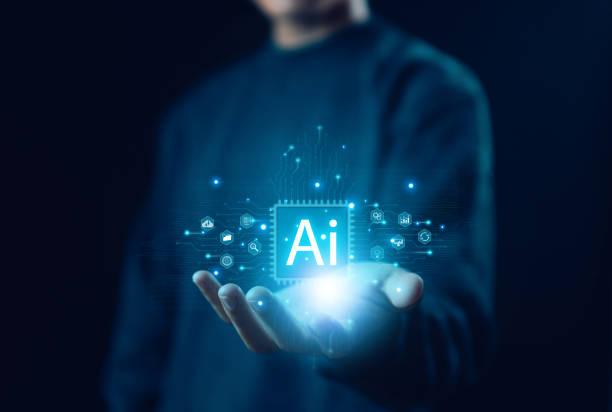
The future of Artificial Intelligence is full of breathtaking potentials and yet unanswered questions.
It is predicted that Artificial Intelligence will not only continue its evolution but also penetrate areas we don’t even imagine today.
One of the key trends is the movement towards Artificial General Intelligence (AGI), which refers to a system with cognitive abilities at or beyond human level.
This type of Artificial Intelligence is capable of learning any intellectual task that a human can perform.
In the near future, we expect to see even more significant advancements in areas such as personalized medicine with the help of Artificial Intelligence, the development of new materials with unique properties, and smarter energy systems.
Fully autonomous vehicles, smart cities that optimize traffic and resources, and more advanced service robots that operate in complex human environments will become a reality.
The news section about Artificial Intelligence is constantly being produced, from research advancements in universities to the release of new products by technology companies.
Increased human-AI interaction will also be another important trend, where Artificial Intelligence acts as a collaborator and enhancer of human abilities.
This analysis of the future shows that Artificial Intelligence not only makes our lives easier but also raises new challenges about the nature of work, creativity, and human identity.
Preparing for this future requires questionable content discussions and investment in educating future generations.
Here is a news and analytical table of possible Artificial Intelligence trends in the future:
| Trend/Prospect | Explanation and Impact | Main Area of Impact |
|---|---|---|
| Artificial General Intelligence (AGI) | AI systems with cognitive capabilities at or beyond human level. | All industries, daily life, science and research |
| Advancement in Advanced Robotics | Robots with more complex physical and cognitive capabilities for service and industrial tasks. | Manufacturing, healthcare, logistics, home services |
| Personalized Medicine with AI | More accurate diagnosis, customized drug discovery, and individualized treatment plans. | Healthcare, pharmaceuticals |
| Smart Cities and AI-Powered Infrastructure | Optimizing traffic, energy management, and improving urban services with Artificial Intelligence. | Urban planning, transportation, energy |
| Human-AI Collaboration | Artificial Intelligence as a collaborator to enhance human capabilities in work and creativity. | All industries, education, art, design |
Chapter Eight: Artificial Intelligence and Employment: The Future of Work and Questionable Content Challenges
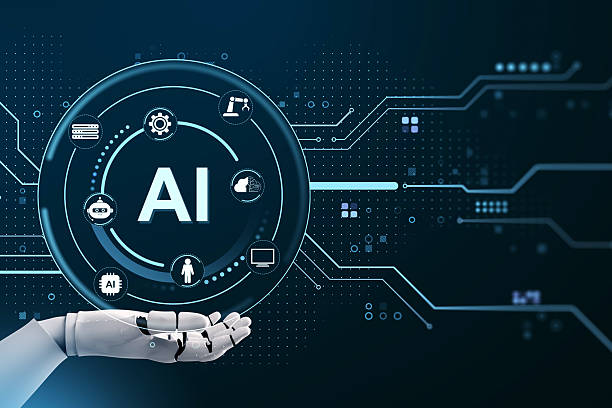
One of the biggest debates and questionable content about Artificial Intelligence is its impact on the labor market and employment.
With the increasing advancement of automation and the capabilities of Artificial Intelligence, there is a concern that many jobs, especially repetitive and rule-based tasks, will be replaced by machines.
This is a real concern that requires careful planning and analysis.
On the one hand, Artificial Intelligence can lead to the loss of some jobs, but on the other hand, it will also create new jobs.
Jobs that require creative skills, problem-solving, emotional intelligence, and human interaction are less at risk of being replaced.
In fact, Artificial Intelligence can be a powerful tool to increase workers’ productivity, not merely replace them.
For example, in the medical sector, Artificial Intelligence can help doctors diagnose diseases faster and more accurately, but it will never replace the empathy and clinical judgment of a physician.
To cope with these changes, guidance for the workforce and policymakers is essential:
- Reskilling and Upskilling: Individuals must continuously update their skills and acquire new ones that complement Artificial Intelligence capabilities, such as critical thinking, creativity, and soft skills.
- Focus on Human-Machine Collaboration: Instead of competing with Artificial Intelligence, humans should learn how to collaborate with it and utilize AI tools to enhance their efficiency.
- Investment in Education: Educational systems must be reviewed to teach the skills needed for the future of work, which include specialized Artificial Intelligence knowledge and digital thinking.
- Social Security Networks: Governments should consider new social security networks to support individuals who may lose their jobs due to automation.
This is a complex discussion with broad news and social dimensions that requires a comprehensive and forward-thinking approach to harness the potential of Artificial Intelligence for the benefit of all.
Are you tired of your e-commerce site getting visitors but no sales? Rasawwb solves your core problem with professional e-commerce website design!
✅ Significant sales increase with targeted design
✅ Flawless user experience for your customers
⚡ Get a free consultation now!
Chapter Nine: Learning Artificial Intelligence: Resources and Educational Paths
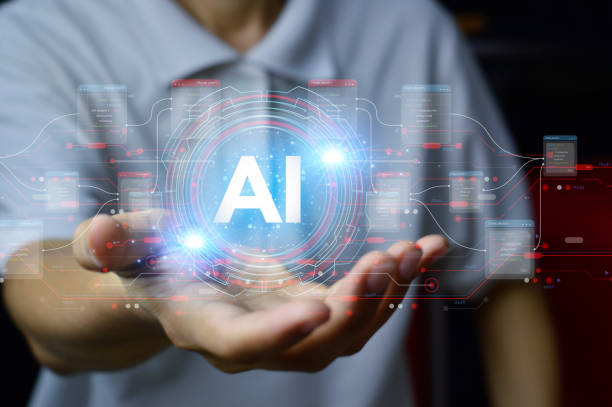
In today’s world, which is rapidly moving towards digitalization and smartening, learning Artificial Intelligence is no longer limited to specialists; rather, it is a valuable skill for anyone who wants to succeed in their future career and profession.
Numerous educational resources are available for learning Artificial Intelligence, which individuals of any knowledge level can benefit from.
To start, explanatory online courses on platforms like Coursera, edX, and Udemy are excellent options.
These courses usually begin with basic concepts and gradually move to more specialized topics such as machine learning, deep learning, natural language processing, and computer vision.
Some of these courses are offered by reputable universities worldwide and prominent Artificial Intelligence professors, providing unparalleled educational opportunities.
Books and scientific articles are also very valuable resources.
Books like “Deep Learning” by Goodfellow, Bengio, and Courville, or “Pattern Recognition and Machine Learning” by Bishop, are reference sources for those interested in deeper topics.
Specialized websites and blogs like Towards Data Science on Medium, or websites related to major technology companies (such as Google AI or IBM AI) also cover the latest news and analytical articles on Artificial Intelligence.
For practical guidance, participating in workshops and boot camps that emphasize project-based learning can be very beneficial.
These programs allow you to strengthen your coding skills in languages like Python, which is the primary language of Artificial Intelligence, and work with frameworks like TensorFlow and PyTorch.
Ultimately, the questionable content and challenging nature of this field make learning an entertaining and dynamic process.
Chapter Ten: Human-AI Coexistence: A Sustainable and Analytical Future
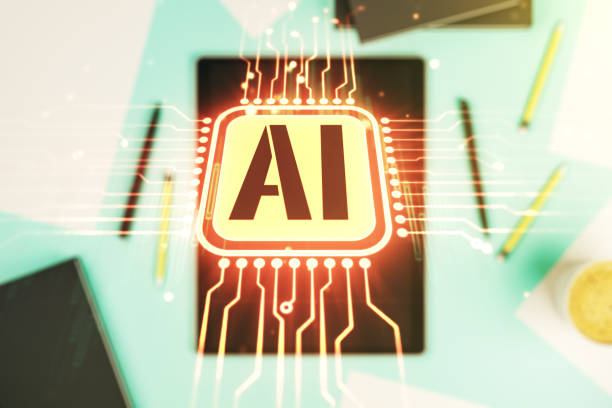
At the end of this comprehensive journey into the world of Artificial Intelligence, it can be concluded that this technology is not only a powerful tool but also a potential partner for humanity on the path of progress.
The coexistence of humans and Artificial Intelligence shapes a future where machines can complement our abilities and help us overcome challenges that we cannot solve alone.
This analytical perspective indicates that a future where humans and Artificial Intelligence work alongside each other will be a collaboration, not a competition.
Artificial Intelligence can play a role in increasing productivity, improving quality of life, and solving complex global issues such as climate change, diseases, and poverty.
Through analyzing vast data and providing new insights, Artificial Intelligence gives us the power to make more informed decisions and act more effectively.
This is an explanatory and educational aspect on a global scale.
With this in mind, for achieving such a sustainable future, the ethical and social challenges of Artificial Intelligence must be addressed seriously.
Responsible Artificial Intelligence development, built upon principles of transparency, fairness, and accountability, is critically important.
Questionable content and news-related discourses about the impacts of Artificial Intelligence must continue to ensure that this technology is used for the benefit of all humanity.
Finally, education and public awareness play a key role in shaping the future of Artificial Intelligence.
By empowering individuals to understand and use Artificial Intelligence, we can ensure that these advancements lead towards creating a better future for everyone, rather than creating fear or inequality.
This coexistence is a gateway to a new era of innovation and progress where human and machine intelligence merge to open new horizons.
Frequently Asked Questions
| Question | Answer |
|---|---|
| 1. What is Artificial Intelligence (AI)? | It is a branch of computer science that aims to create machines capable of simulating human intelligence and performing tasks requiring human thought, such as learning, problem-solving, and decision-making. |
| 2. What are the main types of Artificial Intelligence? | They can be classified into Narrow AI, which focuses on a specific task; General AI, which possesses comprehensive human-level abilities; and Super AI, which surpasses human intelligence. |
| 3. Mention some common Artificial Intelligence applications in our daily lives. | They include voice assistants (such as Siri and Alexa), recommendation systems (such as Netflix and Amazon), self-driving cars, facial recognition systems, and spam filters. |
| 4. What is the difference between Artificial Intelligence and Machine Learning? | Artificial Intelligence is the broader concept of creating intelligent machines, while Machine Learning is a subset of Artificial Intelligence focusing on enabling systems to learn from data without explicit programming. |
| 5. What is Deep Learning? | It is a subset of Machine Learning that uses multi-layered artificial neural networks (deep neural networks) to process data and discover complex patterns, used in image and speech recognition. |
| 6. What are the most prominent benefits of Artificial Intelligence? | Improving efficiency and productivity, automating repetitive tasks, making better decisions based on big data analysis, and developing solutions for complex problems in fields like medicine and science. |
| 7. What are the main challenges facing the development and deployment of Artificial Intelligence? | They include the need for vast amounts of high-quality data, privacy and security issues, bias in data and algorithms, and high development and maintenance costs. |
| 8. Does Artificial Intelligence raise ethical or social concerns? | Yes, it raises concerns related to privacy, algorithmic bias, job displacement due to automation, responsibility for errors made by intelligent systems, and the need for a regulatory framework. |
| 9. How can Artificial Intelligence affect the future of the job market? | It can lead to the automation of some routine jobs, but it will also create new jobs requiring advanced skills in developing, operating, and maintaining Artificial Intelligence systems. |
| 10. What are some modern or promising technologies in the field of Artificial Intelligence? | These include advanced Natural Language Processing (NLP) (such as large language models like ChatGPT), computer vision, robotics, and Generative AI. |
And other services of Rasawwb Advertising Agency in the field of advertising
Smart Content Strategy: A novel service to increase website traffic through intelligent data analysis.
Smart Sales Automation: A fast and efficient solution to increase click-through rates by focusing on Google Ads management.
Smart Social Media: A combination of creativity and technology for digital branding through precise audience targeting.
Smart Direct Marketing: Revolutionize digital branding with the help of attractive user interface design.
Smart Advertorial: An exclusive service for increasing website traffic based on the use of real data.
And over hundreds of other services in the field of internet advertising, advertising consultation, and organizational solutions
Internet Advertising | Advertising Strategy | Advertorial
Resources
Artificial Intelligence and Iran’s Future on Digiato
Innovation in Artificial Intelligence on Zoomit
Pioneering in Artificial Intelligence on Tasnimnews
Artificial Intelligence Developments on ISNA
? Do you want your business to shine in the digital world? Rasawwb Afarin Digital Marketing Agency provides innovative solutions and targeted strategies to help you establish a strong online presence. From SEO and search engine optimization to online advertising management and user-friendly website design, we are committed to your growth and success. With Rasawwb Afarin, secure the future of your business in the digital space.
📍 Tehran, Mirdamad Street, next to Bank Markazi, Southern Kazerun Alley, Ramin Alley, No. 6

